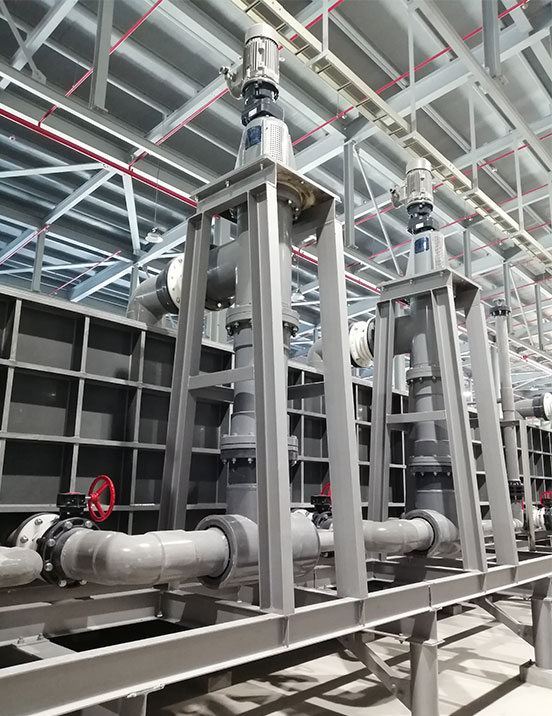The integration of temperature and pressure control systems in a Mixer Settler is a critical aspect of ensuring coordinated and efficient operation in liquid-liquid extraction processes. The optimization of this integration involves sophisticated engineering and control strategies to meet the specific requirements of the extraction process.
Control System Architecture:
Centralized Control: Many modern Mixer Settlers feature a centralized control system that manages both temperature and pressure. This centralized method permits for seamless communique and coordination among the temperature and strain control subsystems.
Automation and PLCs: Programmable Logic Controllers (PLCs) are frequently hired to automate and coordinate the manipulate of temperature and stress. PLCs can execute complicated manage algorithms based totally on actual-time records, contributing to the efficiency of the machine.
Temperature Control Strategies:
PID Control: Proportional-Integral-Derivative (PID) control algorithms are typically used for temperature manage. These algorithms constantly adjust the heating or cooling elements to preserve the desired temperature setpoint.
Feedback Loops: Temperature sensors located strategically in the Mixer Settler offer real-time feedback to the control gadget. The control machine makes use of this remarks to make dynamic adjustments to the heating or cooling mechanisms.
Cascade Control: Cascade manipulate techniques, in which the output of one controller (e.G., temperature) influences the setpoint of any other (e.G., pressure), are employed for better balance and responsiveness.
Pressure Control Strategies:
Valve Regulation: Pressure control is regularly executed through the regulation of valves that manipulate the flow of gases or beverages inside the machine. The beginning or closing of these valves is adjusted based on stress measurements.
Pressure Sensors: Pressure sensors located strategically in the
Mixer Settler offer non-stop comments to the manipulate system. The manipulate device uses this feedback to modulate the valves and preserve the preferred stress conditions.
Backpressure Control: In eventualities where backpressure is crucial to save you undesirable segment changes or vaporization, the control system guarantees the protection of backpressure through changes in valve positions.
Coordination and Interlocking:
Synchronization of Setpoints: The setpoints for temperature and pressure are carefully synchronized based totally on the necessities of the liquid-liquid extraction system. This synchronization prevents conflicts and ensures that adjustments in one parameter do not adversely affect the other.
Interlocking Mechanisms: Interlocking mechanisms are applied to prevent unsafe working situations. For example, the manipulate machine may also interlock the heating gadget to prevent activation if the stress is out of doors a safe range, and vice versa.
Safety Measures:
Pressure Relief Systems: To make certain protection, stress comfort systems are integrated into the Mixer Settler. These structures set off if stress exceeds predetermined safety limits, stopping over-pressurization.
Temperature Limits: Safety features are integrated to prevent temperature from exceeding predetermined limits. Emergency shutdown structures can be activated if the temperature manage gadget malfunctions or if critical temperatures are approached.
Dynamic Process Optimization:
Real-Time Monitoring: Temperature and stress conditions are continuously monitored in actual-time. Data from these tracking systems are used to make dynamic adjustments, optimizing the extraction manner for performance and yield.
Adaptive Control Algorithms: Some superior Mixer Settlers make use of adaptive control algorithms which can learn and adapt to variations within the system through the years. This adaptability ensures robust performance beneath converting conditions.
Energy Efficiency:
Heat Recovery Systems: Integration may additionally contain heat restoration structures where excess heat from the extraction method is reclaimed and reused within the machine. This method enhances power performance through minimizing waste warmness.
Variable Speed Drives: Temperature and pressure control structures may additionally comprise variable speed drives for pumps and fans. These drives modify the velocity based on call for, optimizing energy intake.
